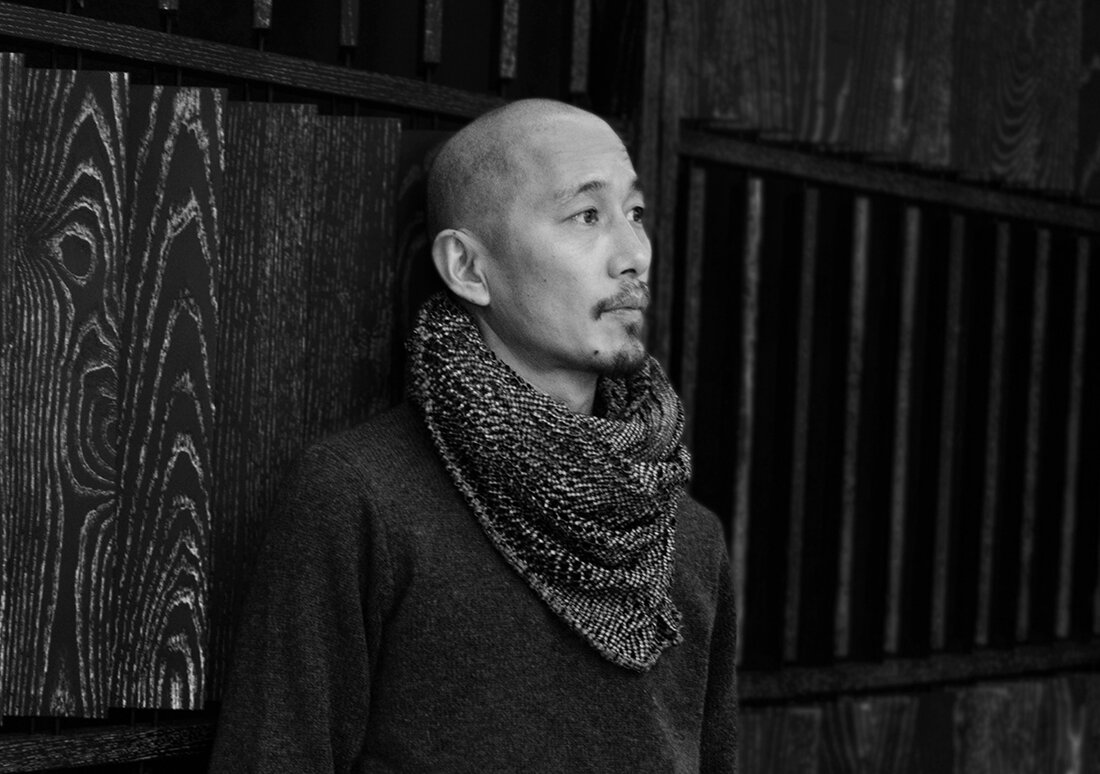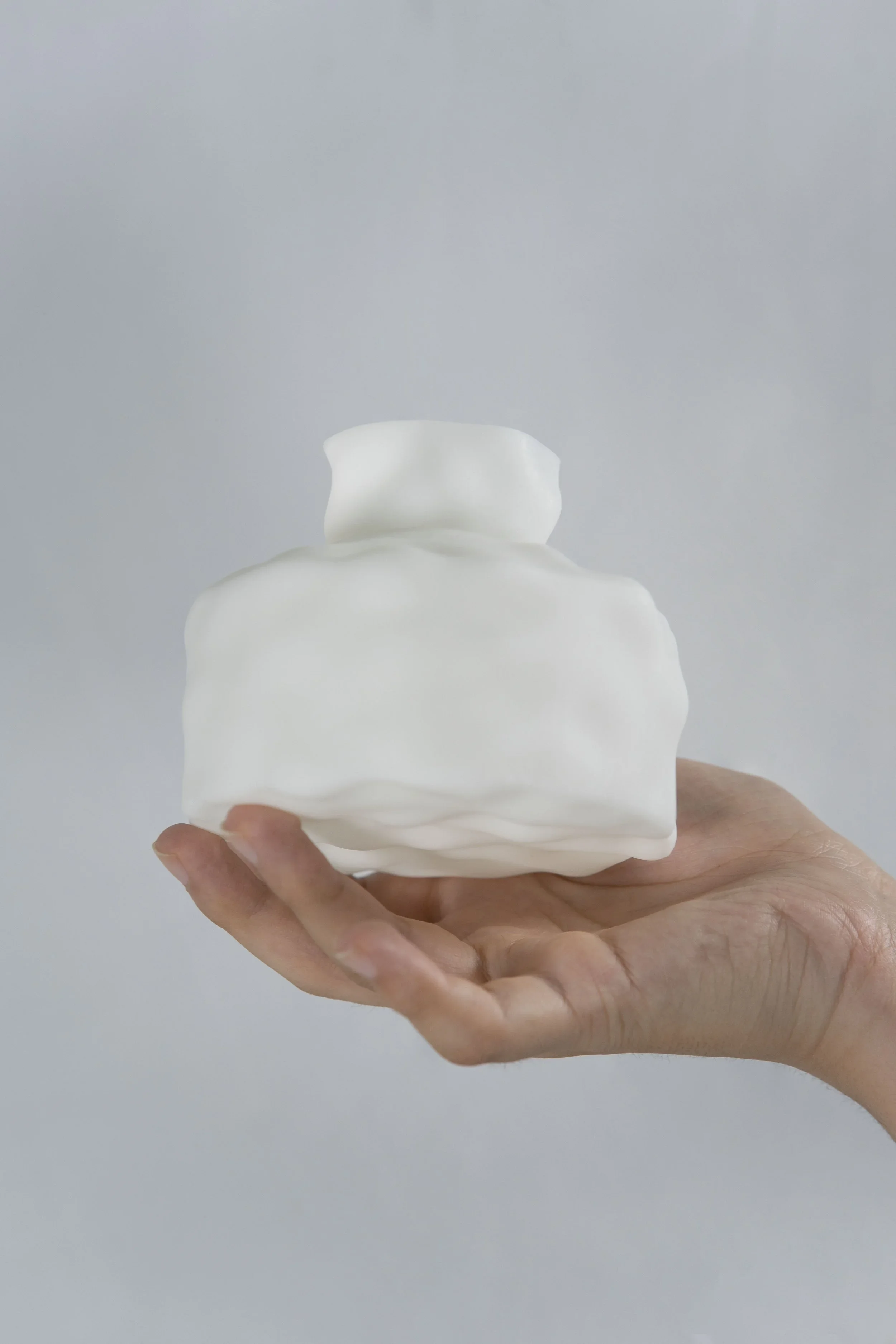9 Questions with Tomoki Uematsu
Tomoki Uematsu is a Japanese Artist and designer was born in 1974 in Tokyo Japan. Tomoko interprets the sense of subconsciousness experienced by meditation and qigong as emotional memory memorized in the body, and expresses the micro and macro world view from the cells of the body to the universe using the motif of nature in the world of surrealism . All work steps are improvised in order to give an intuitive sense of subconsciousness.
In 1997, earned a bachelor's degree in art from the NY Department of Illustration at the Parsons School of Design. In charge of visual branding for global companies such as Google, NIKE, and Amazon. He is also involved in the planning and production of the logo and signature of Tadao Ando's architectural "Church of the Forest". He has won numerous advertising awards, including Cannes Lion, TCC, and, ADC. Creative Director of the German branding design company Peter Schmidt Group Japan.
INTERVIEW
In your youth, when did you realize that you were going to become an artist?
I have always loved art, but when I became a parent, I started thinking about doing art in the early 40s. My wife was German and had a child, and I vaguely felt that I had to do art to live in Germany. I met a coaching person who happened to ask me what I wanted to do, and I thought it was art, and then I started to listen to my inner voice.
Until then, I was doing graphic design, but when I was working for a major global company, technology evolved, and I heard that AI made a logo. When I thought about my future, AI, There was also a period when I was looking for things I couldn't do, so I feel like I was inevitably going toward the arts even at work.
However, it took me several years to make many mistakes before I could express what I thought.
What are you trying to communicate with your art?
By observing nature, I want to express a feeling like meditation. Meditation is about observing oneself and knowing one's emotion, so the title is NATURE+EMOTION. To express one's feelings, I want to express my thoughts and feelings of meditation and my dirty part, which is the opposite. It's interesting because of the beautiful emotion, and the dirty feeling collides with each other. I also want to use my imagination while thinking that it would be great if I could express the feeling of being open to the subconscious of the meditation experience. In that sense, it may be the call that it is surrealism art that uses nature.
What do you see as the strengths of your project, visually or conceptually?
According to ZEN's idea, it is called that Karesansui was made with the intention that it would be lost by becoming one with nature.
Also, in Buddhism, death is said to be the four significant separations, and the end has the meaning of being able to dissolve into the earth, water, fire, and wind. Based on this idea, I would like to express a feeling of being released from the subconscious by mixing the microscopic and macroscopic worlds of nature. There is only one theme, but I feel that the combination of natural images has various patterns and stories in each image. I'm interested in discovering oneself when new visuals are made rather than establishing my own style, so I hope to continue to develop new worlds.
Coronavirus light and dark side, Tomoki Uematsu©
The combination of the images and colors illustrating a Coronavirus light and an emotional dark side. Where do you find inspiration?
I had a fever around the end of March of this year and slept at home for about two days. The whole family thought I was Corona, and I thought so too. After all, it wasn't in Corona, but I felt that the stress from Corona was the cause, so I meditated for about an hour the next day. I noticed that the anxiety inside me was increasing by the influence of Corona. I felt uneasy feelings on my shoulders and hips, and while meditation, I felt tired and observed those feelings. I felt like I was overwhelmed by anxiety, but when I suddenly felt grateful, the dulls on my shoulders and waist suddenly disappeared, and my current view changed.
At this opportunity, I felt that I was naturally led to the fact that I should act against my anxiety. When I looked at myself from a distant future through the experience of meditation, I felt that something new might create at this opportunity.
What is your creative process like?
If I think about the concept and make it, I will have a long experience of design, and it will be an expression like an advertisement, so I try to improvise everything. I like the feeling that I lose myself as I find inspiration from one photo and search for about five items that match that.
I don't think about the concept when choosing photos. I select those that I believe have good natural vibration. I try to pick it intuitively. Sometimes I think of nature as an abstract object. Or maybe you're thinking of things with a combination of beats, like making music. If you do it in this way, you may get vibrations of works that have been physically influenced by Picasso, Dali, abstract painting, Tadanori Yokoo, and jazz and club music, which have been greatly influenced by me. Ultimately, I want to express emotion and openness, so I think that this kind of method can be continued for a long time, and the energy of the work can be maintained.
Nature & Emotion #19, Tomoki Uematsu©
How do you keep yourself up to date with the latest digital trends and technologies that have today a significant impact on your artistic production?
I deal with nature as a theme, so I don't care about trends. Since nature also considers the connection between the mind and body, I think that the field of health will continue to develop in the future, so it may be possible to make a work like Corona. I value physical experience as much as possible rather than information only on the Internet. For example, the experience that is based on my work visualizes the sensations experienced in meditation and qigong. With the expressiveness to imagine the physical experience, we may not rush to the new technology. Of course, I'm influenced by the information on the Internet, so I think that I can sell my point of view if I can make a new way of showing things by combining things as an information editor.
What do you hope that the public takes away from your work?
You can feel meditative just by changing the way you look at the nature you are in touch with, and it would be nice if you could feel a little happy when you relax. Since there is too much information on the Internet these days, I think it is necessary to devise a way to rest your mind through nature and meditation. Later, I find it sometimes necessary to deal with my anxiety and fear. It does not mean that you feel uncomfortable all the time, but you can sometimes overcome it by facing each other. It was necessary to accept all the good and bad parts of me to express art. I hope you can feel such a feeling from my work.
Nature & Emotion #29, Tomoki Uematsu©
Do you have any upcoming shows or collaborations you are looking forward to?
I was planning an exhibition in France this October, but I canceled because of Corona. I'm glad I canceled it because it's the second season of Corona in France. This year, I'll focus on online promotion and think about new ideas next year when Corona calms down.
Tomoki, Share something you would like the world to know about you?
After 40, I challenged art to turn my dreams into reality. I indeed felt miserable for a long time, thinking that it was a stupid challenge at first. However, I continued with art, which was supported by coaching, meditation, qigong. Even if people disapprove of it, there is a sense of chasing their dreams and regaining their growth and energy. I think this feeling is necessary for raising children. Even if I become a parent, I think it's good to continue doing things without giving up my dreams.























